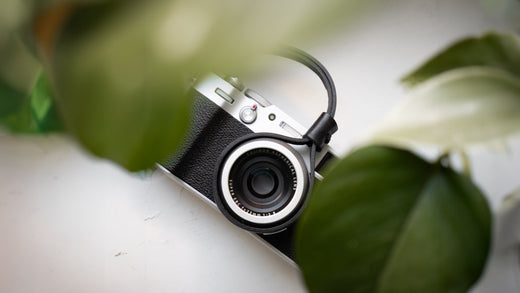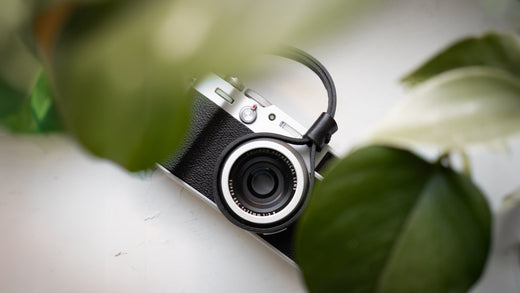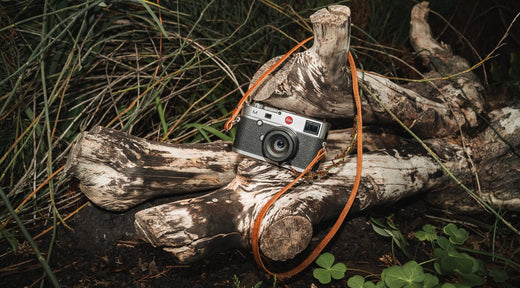
What is the difference between Pueblo Leather and Regular Leather?
When it comes to camera straps, quality, comfort, and durability are essential. As photographers and urban explorers, we need gear that not only performs well but also lasts and looks good. Leather camera straps are an excellent choice, but not all leathers are the same. If you’re exploring options, you’ve likely come across Pueblo leather and regular leather. But what’s the difference, and why does it matter for your camera strap? In this post, we’ll explain the key distinctions, especially why Pueblo leather stands out as the superior choice for those who value craftsmanship and longevity.
What is Pueblo Leather?
Pueblo leather is a premium, vegetable-tanned leather crafted by the renowned Badalassi Carlo Tannery in Italy. Known for its distinct, matte finish and velvety texture, this leather is favored by artisans for its natural look and rich patina that develops with time. The unique rustic texture of Pueblo leather sets it apart from other leathers—it has a naturally weathered appearance that looks vintage from day one and only gets better with use.
When you’re using a camera strap, the leather needs to not only look good but also be comfortable and durable. Pueblo leather excels in both areas, offering a soft touch that feels great against the skin and exceptional strength to hold your camera securely.
Key characteristics of Pueblo leather:
- Texture: Soft, suede-like feel with a matte, rustic finish
- Durability: Strong and resilient, developing an even more attractive patina over time
- Finish: Distinctly weathered and vintage-looking, with a rich color depth that evolves with age
- Sustainability: Made using eco-friendly vegetable tanning, which avoids harmful chemicals
What is Regular Leather?
"Regular leather" typically refers to mass-produced, chrome-tanned leather, which is widely available and used in various consumer products. The chrome-tanning process uses chemical agents, primarily chromium salts, to quickly transform rawhide into leather. This method is faster and less expensive, but the resulting leather often lacks the unique characteristics and aging qualities of vegetable-tanned leathers like Pueblo.
Regular leather is often smooth and shiny, maintaining a uniform appearance over time. While durable, it doesn’t develop the same character and patina that makes Pueblo leather so special.
Key characteristics of regular leather:
- Texture: Smooth and polished, often glossy
- Durability: Strong but may not age as gracefully as vegetable-tanned leather
- Finish: Uniform appearance, with less variation in texture and patina development over time
- Sustainability: The chrome-tanning process is less eco-friendly due to the use of chemicals
Why Pueblo Leather is Ideal for Camera Straps
For camera straps, the material you choose is crucial. Here’s why Pueblo leather is superior to regular leather when it comes to crafting camera straps:
1. Comfort & Feel
Pueblo leather has a soft, suede-like feel that sits comfortably on your shoulder, even during long photo sessions. Regular leather, with its smooth and sometimes rigid surface, can feel less forgiving over time.
2. Durability & Aging
Pueblo leather is highly durable and develops a beautiful patina as it ages, which adds to its character. As you continue to use your camera strap, the leather becomes softer, while its weathered look deepens. Regular leather, in contrast, tends to maintain its initial appearance without developing the rich patina that gives Pueblo its charm.
3. Unique Aesthetic
If you love the look of well-worn leather that tells a story, Pueblo is the way to go. Its matte, vintage appearance is distinct from the shiny, polished finish of regular leather. Over time, a Pueblo leather camera strap will develop a rich, personalized look that’s unique to how you use it.
4. Sustainability
As an eco-conscious urban explorer, you’ll appreciate that Pueblo leather is vegetable-tanned, using natural tannins from tree bark instead of harmful chemicals. This process is not only better for the environment but also produces leather that is durable and long-lasting, perfect for those who care about sustainability.
Key Differences Between Pueblo Leather and Regular Leather for Camera Straps
1. Tanning Process
- Pueblo Leather: Vegetable-tanned, using natural tannins, which is eco-friendly and results in a leather that develops a beautiful patina.
- Regular Leather: Chrome-tanned, a chemical process that is faster but less environmentally friendly.
2. Texture and Finish
- Pueblo Leather: Matte, rustic texture that feels soft and becomes more unique over time.
- Regular Leather: Smooth, polished, with a uniform appearance.
3. Durability and Aging
- Pueblo Leather: Ages beautifully, becoming softer and developing a rich patina with use.
- Regular Leather: Durable but does not age as gracefully and lacks the character of Pueblo leather.
4. Comfort
- Pueblo Leather: Soft and flexible, making it comfortable to wear for extended periods.
- Regular Leather: Can be stiffer, especially in the early stages of use.
Conclusion: Pueblo Leather for the Perfect Camera Strap
Choosing the right material for your camera strap is crucial, especially if you value comfort, durability, and aesthetics. Pueblo leather stands out as the top choice due to its eco-friendly production, unique look, and the way it beautifully ages with time. Unlike regular leather, which remains uniform and often lacks character, Pueblo leather transforms over time, making each camera strap a personal and lasting accessory.
At Arch Appearance, we specialize in creating high-quality camera straps from Pueblo leather. These straps aren’t just functional—they’re designed to age gracefully and become a cherished part of your photography gear. Explore our collection and discover the difference Pueblo leather can make for your photography adventures.



